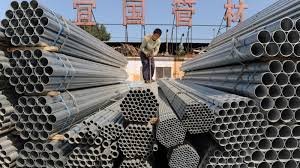Singapore, a city-state that has transformed itself into a global business hub within a few decades, is often celebrated as a model of economic success. However, behind its gleaming skyscrapers and efficient infrastructure, Singapore faces a set of complex, multi-dimensional challenges that threaten its future. These challenges—spanning demography, economic sustainability, and natural resource constraints—demand innovative and resilient strategies. Here, we explore the eight major challenges Singapore must navigate as it aspires to secure a sustainable, prosperous future.
- Aging Population and Shrinking Workforce
Singapore’s aging population presents one of the most pressing socio-economic issues. Currently, more than 16% of Singapore’s citizens are over 65 years old, and this proportion is projected to rise to 25% by 2030. The fertility rate in Singapore is among the lowest in the world, standing at 1.1 births per woman—far below the replacement rate of 2.1. This decline in births, combined with increased life expectancy (over 84 years on average), places pressure on healthcare, pensions, and social services, while also shrinking the working-age population. According to Singapore’s Ministry of Health, spending on eldercare will likely triple by 2030 if current trends continue. The government has introduced policies to incentivize childbirth, such as tax benefits and housing subsidies, yet these efforts have seen only limited success.
- Dependency on Foreign Labor
Singapore’s low birth rate and aging population intensify its reliance on foreign labor to sustain economic growth. In 2021, non-residents made up roughly 30% of the city-state’s total workforce. While foreign professionals fill critical skill gaps in sectors like technology, finance, and healthcare, an increasing dependency has sparked public debate about the impact on job availability and cultural integration. Tightened immigration policies in recent years aim to balance the need for foreign talent with the interests of local employment. However, with a diminishing domestic labor pool, Singapore’s economic trajectory may be constrained without sufficient foreign talent to drive innovation and productivity.
- High Cost of Living and Income Disparity
Singapore’s cost of living is consistently ranked among the highest globally, with housing, healthcare, and education expenses weighing heavily on residents. In 2023, the cost of living index ranked Singapore as one of the world’s most expensive cities, particularly in terms of housing prices, which have seen an upward trend despite government interventions. Public housing, which accommodates around 80% of the population, remains affordable to many, yet private housing costs have surged, largely due to high demand and limited land. Compounding these challenges is the widening wealth gap. According to government statistics, the Gini coefficient—an index measuring income inequality—has fluctuated around 0.452 in recent years, showing significant income disparity. Reducing this gap will be critical to maintaining social cohesion and ensuring that economic growth benefits all segments of society.
- Resource Scarcity and Dependency on Imports
Singapore’s lack of natural resources leaves it almost entirely dependent on imports for essential commodities such as food, water, and energy. About 90% of Singapore’s food supply is imported, and this heavy reliance exposes the nation to supply chain disruptions and global price fluctuations. In response, Singapore has introduced initiatives like the “30 by 30” goal, aiming to produce 30% of its nutritional needs locally by 2030. Yet, scaling up food production in a highly urbanized environment is challenging. Additionally, Singapore’s water security remains a concern, despite advancements in desalination and water recycling. Partnerships with neighboring Malaysia, which supplies a significant portion of Singapore’s water, underscore the geopolitical vulnerability inherent in this dependency.
- Environmental Sustainability and Climate Vulnerability
As a low-lying island nation, Singapore is particularly vulnerable to rising sea levels and climate change. Predictions by Singapore’s Meteorological Service indicate that sea levels around the island could rise by up to 1 meter by 2100, posing a serious risk to coastal infrastructure. In response, the government has committed to ambitious sustainability targets under the Singapore Green Plan 2030, which includes goals like halving carbon emissions by 2050 and increasing solar capacity to meet 3% of the country’s energy needs by 2030. However, transitioning to sustainable practices in a densely populated city-state presents logistical and economic hurdles.
- Intense Global Competition for Trade and Investment
Singapore’s strategic location and pro-business environment have traditionally made it a hub for international trade and investment. However, as neighboring countries in Southeast Asia, like Vietnam and Indonesia, rise as competitive manufacturing and trade centers, Singapore faces greater competition. Moreover, the global shift towards regional trade blocs and supply chain localization adds pressure to Singapore’s trade-dependent economy. To retain its edge, Singapore is investing heavily in innovation, digital transformation, and upskilling its workforce. Yet, sustaining competitiveness will require Singapore to continuously adapt its economic model in an increasingly multipolar world.
- Technological Adaptation and Cybersecurity Threats
Singapore has embraced digitalization as a cornerstone of its economic strategy, with initiatives like the Smart Nation program focusing on AI, digital infrastructure, and automation. However, as Singapore integrates advanced technologies, the risks associated with cybersecurity grow as well. A survey by Cybersecurity Agency of Singapore reported over 9,000 cases of cybersecurity incidents in 2022 alone, highlighting the increased vulnerability as Singapore moves further into the digital realm. The government is actively investing in cybersecurity infrastructure, but the rapid pace of technological advancement necessitates continuous upgrades and vigilance.
- Navigating Geopolitical Tensions
Located at the heart of a dynamic region, Singapore’s economic stability is closely linked to its diplomatic relationships with larger global powers. The ongoing U.S.-China trade tensions have had significant implications for Singapore, as these two nations are its top trading partners. Singapore’s unique position as a neutral ground for global business and diplomacy enables it to mediate between various interests, yet maintaining this neutrality is increasingly challenging as global power dynamics shift. Singapore must carefully manage these relationships to protect its economic interests, while also engaging in regional trade agreements, such as the Regional Comprehensive Economic Partnership (RCEP), to diversify its trade portfolio.

























































